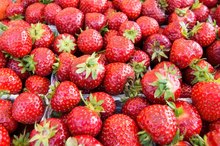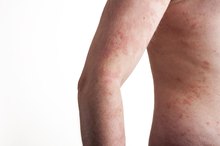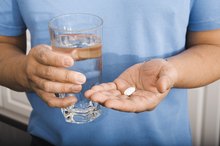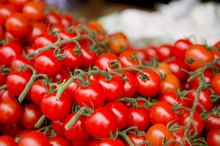What does fact checked mean?
At Healthfully, we strive to deliver objective content that is accurate and up-to-date. Our team periodically reviews articles in order to ensure content quality. The sources cited below consist of evidence from peer-reviewed journals, prominent medical organizations, academic associations, and government data.
- WomensHealth.gov: Vaginal Yeast Infections Fact Sheet
- American Heart Association: Whole Grains and Fiber
- Academy of Nutrition and Dietetics: Antioxidants
The information contained on this site is for informational purposes only, and should not be used as a substitute for the advice of a professional health care provider. Please check with the appropriate physician regarding health questions and concerns. Although we strive to deliver accurate and up-to-date information, no guarantee to that effect is made.
Foods to Eat to Get Rid of Yeast in the Body
The yeast-like fungus known as candida occurs in everyone's body. While modest amounts don't cause problems, overgrowth can lead to infections called candidiasis in the vagina, mouth, skin or digestive system. About 75 percent of women will experience at least one vaginal yeast infection, according to the University of Maryland Medical Center, and most people with HIV/AIDS will develop some form of candidiasis 12. Along with any necessary medical treatment, particular foods may help prevent or minimize your symptoms.
If you are experiencing serious medical symptoms, seek emergency treatment immediately.
Yogurt and Kefir for Probiotics
While research is limited, numerous clinical trials show that probiotics can help improve bacterial balance in the body, according to a "Journal of Antimicrobial Chemotherapy" report published in 2006, lowering the risk of candida overgrowth and yeast infections. Probiotics may be particularly useful if you experience more than three vaginal yeast infections per year 3.
Fish and Flaxseeds for Omega-3s
Foods to Heal Thrush
Learn More
The anti-inflammatory properties of omega-3 fats make fish and flaxseeds, top sources of the nutrients, helpful if you're prone to yeast infections. UMMC recommends consuming more fish and fewer fatty animal products, such as red meat and whole milk, for improved symptoms. Fish particularly rich in omega-3s include mackerel, lake trout, herring and salmon. Grind whole flaxseeds within 24 hours of use or purchase ground seed in Mylar packaging to keep the ingredients active. Eat ground flaxseeds alone or as a nutritious addition to other foods, such as yogurt, cereal or smoothies.
- The anti-inflammatory properties of omega-3 fats make fish and flaxseeds, top sources of the nutrients, helpful if you're prone to yeast infections.
Whole Grains for B Vitamins
White flour and other refined grains may increase yeast growth in your intestines, says WomensHealth.gov. Whole grains provide a nutritious alternative and, unlike refined grains, haven't been stripped of valuable nutrients such as B vitamins -- nutrients that may lower your risk for candida infections.
Fruits and Vegetables for Antioxidants
Should I Take a Probiotic Every Day?
Learn More
Maintaining a strong immune system is important for keeping your candida levels in check, and colorful fruits and vegetables, leading antioxidant sources, are your best dietary friends. Eating at least 2 cups of fruit and 2-1/2 cups of vegetables per day is a good way to start meeting your basic needs, says the Academy of Nutrition and Dietetics 5. Particularly antioxidant-rich varieties include:
- citrus fruits
- berries
- dark
- leafy greens
- sweet peppers
- potatoes
For added benefits, choose sweet fruits and vegetable dishes, such as natural applesauce or a baked sweet potato, instead of sugary sweets for dessert. Added sugars can stimulate candida production in your body, increasing your risk of infection.
- Maintaining a strong immune system is important for keeping your candida levels in check, and colorful fruits and vegetables, leading antioxidant sources, are your best dietary friends.
Antifungal Garlic and Spices
Cloves and cinnamon also provide a flavorful alternative to sugar in sweeter dishes, such as baked apples, pears and winter squash. Using more garlic and less butter on fish and in sauces and other dishes can help keep your intake of inflammatory fats down.
Related Articles
References
- University of Maryland Medical Center: Candidiasis
- University of Maryland Medical Center: Omega-3 Fatty Acids
- WomensHealth.gov: Vaginal Yeast Infections Fact Sheet
- American Heart Association: Whole Grains and Fiber
- Academy of Nutrition and Dietetics: Antioxidants
- Yapar Nur. Epidemiology and risk factors for invasive candidiasis. Ther Clin Risk Mgmt. 2014;10(2014):95-105. doi:10.2147/tcrm.s40160
- Buggio L, Somigliana E, Borghi A, Vercellini P. Probiotics and vaginal microecology: fact or fancy? BMC Womens Health. 2019 Jan;19:25. doi:10.1186/s12905-019-0723-4
- Gunther LSA, Martins HPR, Pimenta de Abreu AL, et al. Prevalence of Candida albicans and non-albicans isolates from vaginal secretions: comparative evaluation of colonization, vaginal candidiasis and recurrent vaginal candidiasis in diabetic and non-diabetic women. Sao Paulo Med. J. 2014;132(2):116-20. doi:10.1590/1516-3180.2014.1322640
- Xie HY, Feng D, Wei DM, Mei L, Chen H, Wang X, Fang F. Probiotics for vulvovaginal candidiasis in non-pregnant women. Cochrane Database Syst Rev. 2017;23;11(11):CD010496. doi:10.1002/14651858.CD010496.pub2
- Niewenhuizen WF, Pieters RHH, Knippels LMJ. Is Candida albicans a trigger in the onset of coeliac disease? Lancet. 2003;361(9375):2152-4. doi:10.1016/S0140-6736(03)13695-1
- Pérez-Torrado R, Querol A. Opportunistic strains of Saccharomyces cerevisiae: A potential risk sold in food products. Frontiers Microbiol. 2016;6:8. doi:10.3389/fmicb.2015.01522
- Wilson D. A tale of two yeasts: Saccharomyces cerevisiae as a therapeutic against candidiasis. Virulence. 2017;8(1):15-7. doi:10.1080/21505594.2016.1230580
- Office of Disease Prevention and Health Promotion. (2015) Appendix 7. Nutritional Goals for Age-Sex Groups Based on Dietary Reference Intakes and Dietary Guidelines Recommendations. 2015-2020 Dietary Guidelines for Americans. Washington, D.C.: U.S. Department of Health and Human Services.
- Kim J, Sudbery P. Candida albicans, a major human fungal pathogen. J Microbiol. 2011;49(2):171-7. doi:10.1007/s12275-011-1064-7
- Martinez RCR, Franceschini SA, Patta MC, et al. Improved treatment of vulvovaginal candidiasis with fluconazole plus probiotic Lactobacillus rhamnosus GR-1 and Lactobacillus reuteri RC-14. Letters Applied Microbiol. 2009;48(3):269-74. doi:10.1111/j.1472-765x.2008.02477.x
Writer Bio
August McLaughlin is a health and sexuality writer, podcast host and author of “Girl Boner: The Good Girl’s Guide to Sexual Empowerment” (Amberjack Publishing, 2018). Her articles appear in DAME Magazine, Cosmopolitan.com, the Huffington Post and more, and she loves connecting with readers through her blog and social media. augustmclaughlin.com









